
Учебники школьные / анг яз уч ответы
.PDF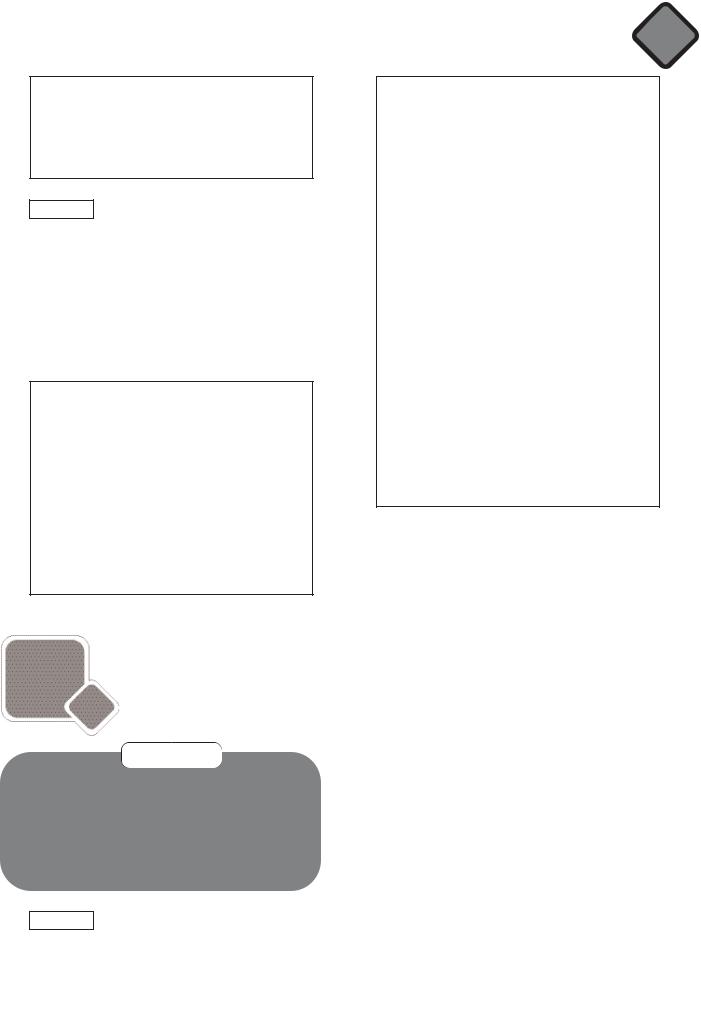
2 f English in Use
Objectives
Vocabulary: phrasal verbs (make); prepositional phrases; words often confused (brush/sweep, cupboard/wardrobe, clean/wash, washing/ cleaning Grammar: infinitive/-ing form revision
Reading: reading for lexico-grammatical correctness
1Focus Forming nouns from adjectives
(word formation)
ñRead the theory box and check Ss understand the task.
Writing Skills 2e
Well, that’s all for now. Have a wonderful time on your birthday. Write soon and
me all about it. Regards,
Jack
BDear Robert,
Thanks for your email. I arrived safely yesterday.
I had a wonderful time at your house would like to thank you and your family your hospitality. You were all so warm friendly. I loved your mum’s cooking much and I really enjoyed playing with your dad. Everyone made me feel a part of the family.
I would love it if you would come and with me next month. Do you think you be able to come? I really hope you can. me know as soon as you can so we can the arrangements.
Thanks again and let’s talk soon. Best wishes,
Lee
ñHave Ss complete the task individually and compare their answers with a partner.
ñRead the sentences in class to check.
Answer Key |
|
|
|
1 |
secrecy |
4 |
patience |
2 |
importance |
5 |
security |
3 |
kindness |
6 |
activity |
|
|
|
|

2f |
|
|
|
English in Use |
|
|
|
|
|
|
|
|
|
|
|
||||
|
|
|
|
Practising phrasal verbs |
|
|
|
4 |
|
Practising vocabulary |
|||||||||
|
|
|
|
|
|
|
|||||||||||||
2 |
Focus |
|
|
|
Focus |
||||||||||||||
|
ñ Explain to Ss that the verb is already in the |
ñ Have Ss complete |
the task individually and |
||||||||||||||||
|
|
|
|
sentence and they must fill in the correct |
|
|
check in their dictionaries. |
||||||||||||
|
|
|
|
particle to form the phrasal verb that applies |
ñ Ask Ss to make sentences with the other words. |
||||||||||||||
|
|
|
|
to the meaning in the sentence. |
|
|
|
ñ Read the sentences out in class and check. |
|||||||||||
|
ñ Ss complete the task individually and check |
|
|
|
|
|
|
|
|||||||||||
|
|
|
|
their answers in Appendix 1. |
|
|
|
|
|
Answer Key |
|
|
|
||||||
|
ñ Invite Ss make |
up |
other sentences |
with |
the |
|
|
|
|
||||||||||
|
|
1 |
sweep |
3 |
clean |
|
|||||||||||||
|
|
|
|
phrasal verbs |
and |
tell the |
class. |
Check |
Ss |
|
|
||||||||
|
|
|
|
|
2 |
wardrobe |
4 |
washing |
|
||||||||||
|
|
|
|
understand the meaning of the phrasal verbs. |
|
|
|||||||||||||
|
|
|
|
|
|
|
|
|
|
|
|||||||||
|
|
|
|
|
|
|
|
|
|
|
|
|
|
|
|
|
|
|
|
|
|
|
Answer Key |
|
|
|
|
|
|
|
|
Suggested Answer Key |
|
||||||
|
|
1 |
out |
3 |
up for |
5 of |
|
|
|
|
1 |
Brush your coat to get the fluff off it. |
|
||||||
|
|
2 |
off with |
4 |
up |
|
|
|
|
|
2 |
Can you pass me a plate from the |
|
||||||
|
|
|
|
|
|
|
|
|
|
|
|
|
|
|
cupboard, please? |
|
|
||
|
|
|
|
|
|
|
|
|
|
|
|
|
|
|
|
|
|||
|
|
|
|
|
|
|
|
|
|
|
|
|
|
3 |
Don’t forget to wash your hands! |
|
|||
3 |
|
Focus |
Practising |
prepositional phrases |
|
|
|
|
|||||||||||
|
|
|
|
4 |
I have to do some cleaning ― the house is a |
|
|||||||||||||
|
|
|
|
|
|
|
|
|
|
|
|
|
|
|
|||||
|
Have Ss complete the task individually and check |
|
|
mess. |
|
|
|
||||||||||||
|
their answers in Appendix 2. |
|
|
|
|
|
|
|
|
|
|
|
|||||||
|
|
|
|
|
|
|
|
|
|
|
|
||||||||
Answer Key |
|
|
|
|
|
||
1 |
to |
4 |
at |
7 |
in |
10 |
on |
2 |
in |
5 |
in |
8 |
in |
11 |
in/at |
3 |
on |
6 |
in |
9 |
in |
12 |
to |
|
|
|
|
|
|
|
|
Suggested Answer Key
2 My bed is in the corner of the room.
3 Our house is on the corner of the street.
4My mother is never at home on Saturdays ― she has a Saturday job.
5My father is always in a hurry to get to work.
6 Our old family farmhouse is now in ruins.
7My dad’s gone for a walk. He set off in the direction of the seafront.
8 I would like to live in the suburbs.
9There is a herd of cows in the field next to my uncle’s house.
10My grandparents live on a farm.
11I’m always in school until four in the afternoon.
12I go to school in a nearby village.
5Focus Practising the infinitive and -ing form/
Reading for lexico-grammatical correctness (gap fill)
ñHave Ss complete the task individually.
ñDirect Ss to reread text to check if it makes sense with their answers.
ñInvite Ss to read the text in class and check their answers.
Answer Key |
|
|
|
|
|
1 |
doing |
5 |
give |
9 |
to arrange |
2 |
to have |
6 |
cleaning |
10 |
seeing |
3 |
to help |
7 |
doing |
|
|
4 |
to fix |
8 |
take care of |
|
|
|
|
|
|
|
|
44
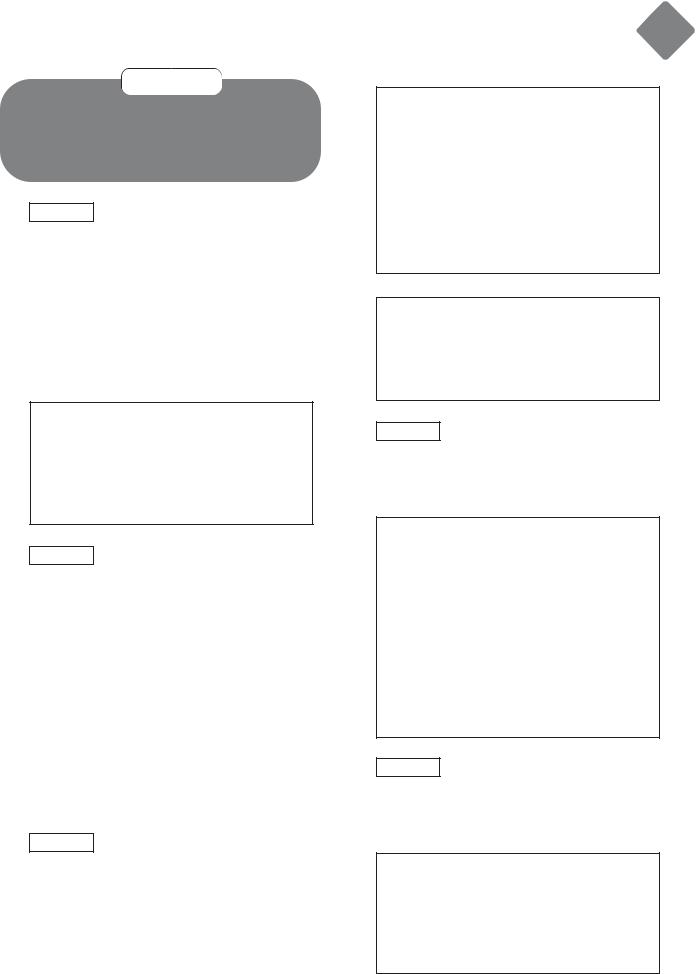
Objectives
Reading: reading for coherence and cohesion Listening: listening for gist
Speaking: discussing information from a text Writing: an article about a famous house/building
1Focus Introducing the topic/Reading for
specific information
ñRefer Ss to the title of the text and the picture.
ñAsk Ss to write down three questions about the text they would like to know the answers to.
ñHave Ss read the text with the gaps individually and see if they can find the answers to their questions.
ñInvite Ss to read their questions to the class and the answers if they were in the text.
Suggested Answer Key
1 Where is it? (In London, England.)
2Who lives there? (The Prime Minister of the UK.)
3What takes place there? (official functions, Cabinet meetings and state dinners)
2Focus Reading for coherence and cohesion
(missing sentences)
ñEmphasise the importance of looking at the sentences before and after the gap to make sure the chosen sentence makes sense in that context.
ñHave Ss complete the task individually and reread the text to ensure it makes sense.
ñInvite Ss to read out the text in class and check their answers.
Answer Key |
|
|
|
||
1 |
E |
3 |
A |
5 |
B |
2 |
C |
4 |
G |
6 |
D |
|
|
|
|
|
|
3Focus Understanding new vocabulary
ñDirect Ss to try to understand the words in bold from their context in the text. Ss can then check their definitions in their dictionaries.
ñSs then complete the sentences individually.
ñInvite Ss to read the sentences in class and check.
Culture Corner |
2 |
|
|
Suggested Answer Key
official functions: formal gatherings originally: when sth first came into existence, first of all
ordinary: not special or different, normal colleagues: co-workers
government ministers: leading politicians who run a country
civil servants: government employees grand: impressive, imposing
Answer Key
1 |
originally |
2 |
government ministers |
3 |
official functions |
4 |
grand |
4Focus Discussing information from the text
ñIn pairs Ss discuss the words listed in the rubric and how they relate to the text.
ñMonitor the task and assist as necessary.
Answer Key
A:The Grand staircase in Number 10 has portraits of every past prime minister hanging on its walls.
B:The Cabinet Room is where government ministers meet to discuss important issues.
A:Margaret Thatcher is a former prime minister who once lived at Number 10.
B:Sir Robert Walpole was the first prime minister. Number 10 was given to him as a gift, but he decided it should be used by all future prime ministers.
5Focus Consolidating information from a text
ñHave Ss listen to and read the text for four interesting facts.
ñInvite Ss to tell the class their facts.
Suggested Answer Key
1The front of 10 Downing Street is very famous because the Prime Minister and other famous politicians make important announcements from outside this big black front door.
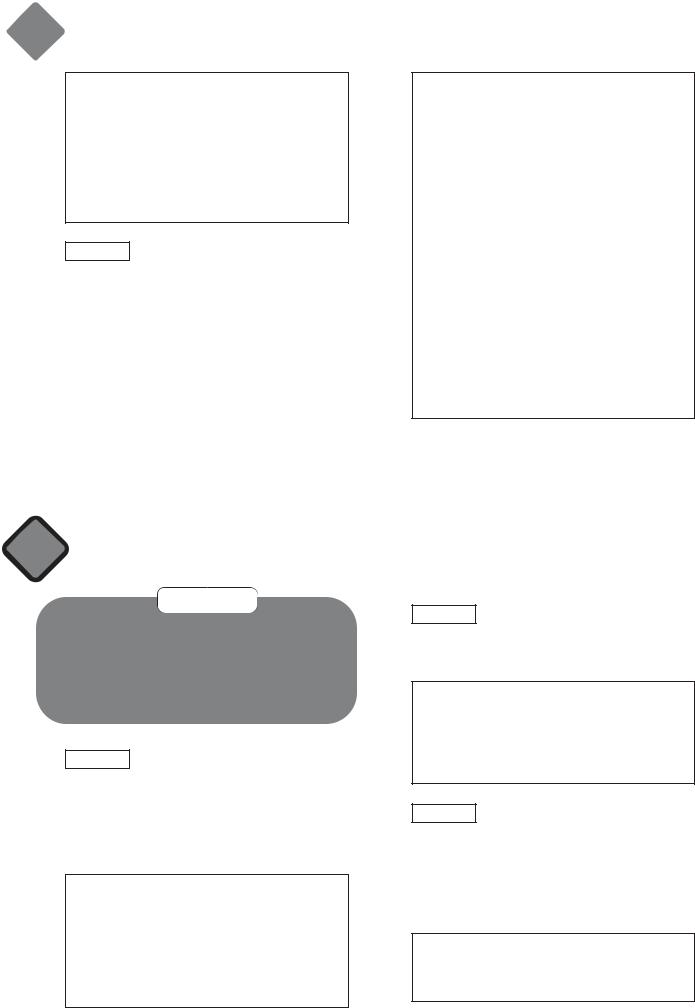
2 |
Culture Corner |
|
|
2Inside the building, there are a number of features and beautiful rooms including the Grand Staircase and the State Dining Room.
3They are portraits of past prime ministers on the walls.
4The Prime Minister lives in a furnished flat on the second floor but he also has his own study where he works and reads.
Writing an article about a famous
Read through the rubric with Ss and check Ss understand the task.
Elicit what they will write (a short article about a famous house or building in my country) and what information they will include in their article (who lives their, what it is like, its history and other interesting facts).
Allow Ss time to research and write their articles. Alternatively, assign the task as HW. Invite Ss to read their articles in class and ask the class to give feedback.
Suggested Answer Key
The Kremlin has been the official residence of the President of the Russian Federation and his Administration since 1992. It is where the highest offices of the state are located. They are surrounded by strict security.
The Kremlin also contains the Grand Kremlin Palace where the emperors of Russia used to live, the Senate and the Armoury. It also contains many churches, squares, gardens and palaces, which are among the city's most popular tourist attractions. The biggest and most famous church is St Basil’s Cathedral which was built in 1554-60 and has ten domes, each with a different design and colour. On the other side is the State Department Store, (GUM) and the State Historical Museum (1875–83). Along with Red Square, the Kremlin is a UNESCO World Heritage Site.
2 Going Green
Objectives
Vocabulary: types of animals/species Reading: reading for specific information Speaking: summarising a text
Writing: a poster about animals and their habitats; sentences about protecting habitats
1Focus Presenting new vocabulary
ñRead through the definitions and elicit which animals in the pictures match which definitions and discuss.
ñAsk Ss to think of other animals that match the definitions.
Answer Key
Hedgehogs, squirrels and foxes are mammals. Frogs and newts are amphibians.
Dragonflies are insects. Trout are fish.
Herons and owls are birds.
Snakes are reptiles.
46
2Focus Introducing the topic of the text
ñRead through the headlines with Ss and discuss the problems they refer to.
Answer Key
Places where animals live face the problems of pollution and deforestation. They face problems caused by new houses, farmers and tourism.
3Focus Predicting the content of a text
ñHave Ss read the title and the first sentence in each paragraph.
ñElicit from Ss what they think the text is about and write their predictions on the board.
ñHave Ss read the text to check their predictions.
Answer Key
The article is about animal habitats and the dangers they face.

|
|
|
|
|
|
|
|
|
|
|
|
|
|
|
|
Going Green |
|
2 |
|||||||
|
|
|
Reading for specific information |
|
|
|
|
|
|
|
|
|
|||||||||||||
|
|
|
|
|
|
|
|
|
|
|
|
|
|
|
|
|
|
|
|
||||||
4 |
|
Focus |
|
Suggested Answer Key |
|
|
|
|
|
|
|
||||||||||||||
|
(T/F/NS) |
|
|
|
|
|
|
Different species of plants and animals live |
|
||||||||||||||||
|
|
|
|
|
|
|
|
|
|
|
|
|
|||||||||||||
|
ñ Have Ss read through the statements (1-7) and |
|
woodlands, |
rivers, |
hedgerows |
and |
|
|
|
||||||||||||||||
|
|
|
underline the key words. |
|
|
|
|
school playgrounds, private gardens or even |
|
||||||||||||||||
|
ñ Ss read the text again and complete the task |
|
the tiny spaces between grains of sand. |
|
|||||||||||||||||||||
|
|
|
individually. |
|
|
|
|
|
|
Unfortunately, humans have destroyed |
|
||||||||||||||
|
ñ Read out the answers in class and check. |
|
wildlife habitats by building roads and |
|
|||||||||||||||||||||
|
|
|
|
|
|
|
|
|
|
|
|
everywhere. |
Water |
pollution, |
litter |
|
|||||||||
|
|
Answer Key |
|
|
|
|
|
|
poisonous chemicals from farms and factories |
|
|||||||||||||||
|
|
1 |
T |
3 |
T |
5 |
F |
7 T |
|
|
endanger many animals such as otters, |
|
|||||||||||||
|
|
2 |
NS |
4 |
T |
6 |
F |
|
|
|
newts, trout and herons. |
|
|
|
|
|
|
|
|||||||
|
|
|
|
|
|
|
|
|
|
|
|
We can help by writing to local councils |
|
||||||||||||
|
|
|
|
|
|
|
|
|
|
|
|
|
|||||||||||||
|
|
|
|
|
|
|
|
|
|
|
|
wildlife charities. We should never |
|
||||||||||||
5 |
|
Focus |
Understanding new vocabulary |
|
litter on the street and pick up any litter |
|
|||||||||||||||||||
|
ñ Refer Ss to the words in bold and explain that |
|
see in woodlands, hedgerows and parks. |
|
|||||||||||||||||||||
|
|
|
they should use the context of the text to |
|
We can also create habitats in our gardens |
|
|||||||||||||||||||
|
|
|
understand their meanings and match them |
|
on our balconies. |
|
|
|
|
|
|
|
|
||||||||||||
|
|
|
with their synonyms in the list. |
|
|
|
|
|
|
|
|
|
|
|
|
|
|
|
|
|
|||||
|
|
|
|
|
|
|
|
|
|
|
|
|
|
|
|
|
|
|
|
||||||
|
ñ Elicit answers in class and check. |
|
|
|
|
|
|
|
|
|
|
|
|
|
|
|
|
|
|||||||
|
7 |
|
Focus |
Making a poster about animals |
|
||||||||||||||||||||
|
|
|
|
|
|
|
|
|
|
|
|||||||||||||||
|
|
|
|
|
|
|
|
|
|
|
|
their habitats |
|
|
|
|
|
|
|
|
|
|
|||
|
|
Answer Key |
|
|
|
|
|
|
|
|
|
|
|
|
|
|
|
|
|||||||
|
|
|
|
|
|
|
ñ Read |
the |
rubric |
in |
class |
|
and |
check |
|
||||||||||
|
|
species ― types |
|
|
|
|
|
|
|
||||||||||||||||
|
|
|
|
|
|
|
|
understand the task. |
|
|
|
|
|
|
|
||||||||||
|
|
hedgerows ― rows of bushes between fields or |
|
|
|
|
|
|
|
|
|
||||||||||||||
|
|
|
ñ In groups of 3-4 have Ss research animals |
|
|||||||||||||||||||||
|
|
along lanes |
|
|
|
|
|
|
|||||||||||||||||
|
|
|
|
|
|
|
|
their |
habitats |
in their |
country and |
|
|||||||||||||
|
|
tiny ― extremely small |
|
|
|
|
|
|
|||||||||||||||||
|
|
|
|
|
|
|
poster |
|
containing |
pictures |
and |
|
|
|
|||||||||||
|
|
survive ― continue living |
|
|
|
|
|
|
|
|
|
||||||||||||||
|
|
|
|
|
|
|
about |
each |
habitat. Alternatively, |
assign |
|
||||||||||||||
|
|
become extinct ― die out |
|
|
|
|
|
|
|||||||||||||||||
|
|
|
|
|
|
|
task as HW. |
|
|
|
|
|
|
|
|
|
|
||||||||
|
|
charities ― organisations that help people or |
|
|
|
|
|
|
|
|
|
|
|
|
|||||||||||
|
|
|
ñ Invite groups to present their posters in |
|
|||||||||||||||||||||
|
|
animals |
|
|
|
|
|
|
|||||||||||||||||
|
|
|
|
|
|
|
|
and ask for feedback from the class. |
|
|
|
||||||||||||||
|
|
|
|
|
|
|
|
|
|
|
|
|
|
|
|||||||||||
|
|
|
|
|
Making notes on a text / Summarising |
|
|
|
|
|
|
|
|
|
|
|
|
|
|
|
|||||
6 |
|
Focus |
|
Suggested Answer Key |
|
|
|
|
|
|
|
||||||||||||||
|
a text |
|
|
|
|
|
|
|
|
Animal Habitats of Russia |
|
|
|
|
|
|
|||||||||
|
ñ Refer Ss to the headings and have them write |
|
|
|
|
|
|
|
|||||||||||||||||
|
|
Boreal Forests |
|
|
|
|
|
|
|
|
|
||||||||||||||
|
|
|
notes about the text under the headings. |
|
|
|
|
|
|
|
|
|
|
||||||||||||
|
|
|
|
The boreal forest is home to many species |
|
||||||||||||||||||||
|
ñ Invite Ss to summarise the text to the class, |
|
|
||||||||||||||||||||||
|
|
animals. Hares, |
Siberian |
tigers, |
black |
|
|||||||||||||||||||
|
|
|
using their notes as a guide. |
|
|
|
|
|
|||||||||||||||||
|
|
|
|
|
|
|
wolves and lynxes are just a few examples |
|
|||||||||||||||||
|
|
|
|
|
|
|
|
|
|
|
|
|
|||||||||||||
|
|
|
|
|
|
|
|
|
|
|
|
the wildlife |
|
that |
live |
in |
|
the |
forests |
|
|||||
|
|
Suggested Answer Key |
|
|
|
|
|
|
|
|
|||||||||||||||
|
|
|
|
|
|
|
Unfortunately, |
deforestation |
from |
|
|
|
|||||||||||||
|
|
ñ where wildlife exists |
|
|
|
|
|
|
|
|
|||||||||||||||
|
|
|
|
|
|
|
companies |
and |
hunting is |
threatening |
|
||||||||||||||
|
|
|
― woodlands, ponds, hedgerows, rivers |
|
|
||||||||||||||||||||
|
|
|
|
animals. |
|
|
|
|
|
|
|
|
|
|
|
||||||||||
|
|
|
― |
playgrounds, gardens, sand |
|
|
|
|
|
|
|
|
|
|
|
|
|
|
|||||||
|
|
|
|
|
|
River & Wetlands |
|
|
|
|
|
|
|
|
|||||||||||
|
|
ñ the problem |
|
|
|
|
|
|
|
|
|
|
|
|
|
|
|||||||||
|
|
|
― |
building roads, houses |
|
|
|
|
This rich ecosystem is the home of many |
|
|||||||||||||||
|
|
|
― litter, poisonous chemicals from farms & |
|
including the sturgeon, white fish and |
|
|||||||||||||||||||
|
|
|
|
factories |
|
|
|
|
|
|
Many birds such as ducks, Siberian cranes |
|
|||||||||||||
|
|
|
― |
threaten animals’ habitats |
|
|
|
geese live in the wetlands. Mining and |
|
||||||||||||||||
|
|
ñ the solutions |
|
|
|
|
|
drilling are destroying the habitat of |
|
||||||||||||||||
|
|
|
― write to councils, wildlife charities |
|
wetlands and these animals face extinction |
|
|||||||||||||||||||
―don’t litter/pick up litter
―create habitats
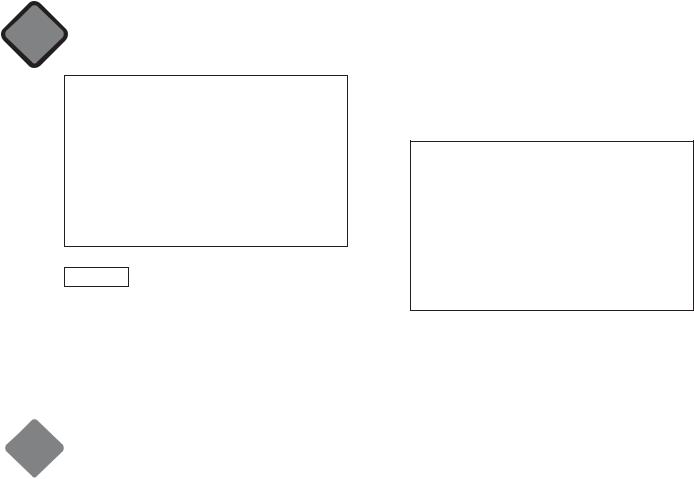
2 Going Green
Arctic Tundra
This cold and treeless habitat has few species of animals that make it their home. There are however, some rare and important animals that live in this area. The polar bear, reindeer and musk ox live in the tundra and need this habitat for their survival. Global warming is destroying this habitat and the survival of these animals.
8Focus Writing a few sentences about
protecting habitats
ñRead the rubric with Ss and check Ss understand the task. Ask Ss to think of solutions to the problem of habitats being destroyed and write a few of their ideas down.
ñIn pairs Ss read their sentences to their partner and discuss.
ñMonitor the activity and assist as necessary.
Suggested Answer Key
We can make sure that any new houses that are built are not built anywhere near an animal habitat or that at least another habitat is created for the animals nearby. We can also plant new hedgerows and woodlands for plants and animals to live in. We can protect areas of countryside and make them into wildlife protection areas.
2 |
Progress Check |
|
|
Check 2 and Look at Module 3 should be done in one lesson.
Answer Key |
|
|
|
|
|
|
|
|
|
|
|
|
|
||
1 |
1 |
spacious |
6 |
gravity |
3 |
1 |
urgency |
|
|
4 |
quietness |
|
|
||
|
2 |
household |
7 |
make |
|
2 |
arrogance |
|
|
5 |
activity |
|
|
||
|
3 |
sociable |
8 |
pitch |
|
3 |
difference |
|
|
|
|
|
|
||
|
4 |
vacuum |
9 |
extinct |
|
|
|
|
|
|
|
|
|
|
|
|
5 |
next-door |
10 |
Take |
4 |
1 |
in |
2 |
in |
3 |
on |
4 |
on |
5 |
in/at |
2 |
1 |
to do |
6 |
going |
5 |
1 |
up |
|
|
4 |
off with |
|
|
|
|
|
2 |
losing |
7 |
to finish |
|
2 |
of |
|
|
5 |
out |
|
|
|
|
|
3 |
do |
8 |
enter |
|
3 |
up for |
|
|
|
|
|
|
|
|
|
4 |
stealing |
9 |
mowing |
|
|
|
|
|
|
|
|
|
|
|
|
5 |
to forget |
10 |
making |
6 |
1 |
c |
2 |
e |
3 |
a |
4 |
b |
5 |
d |
48
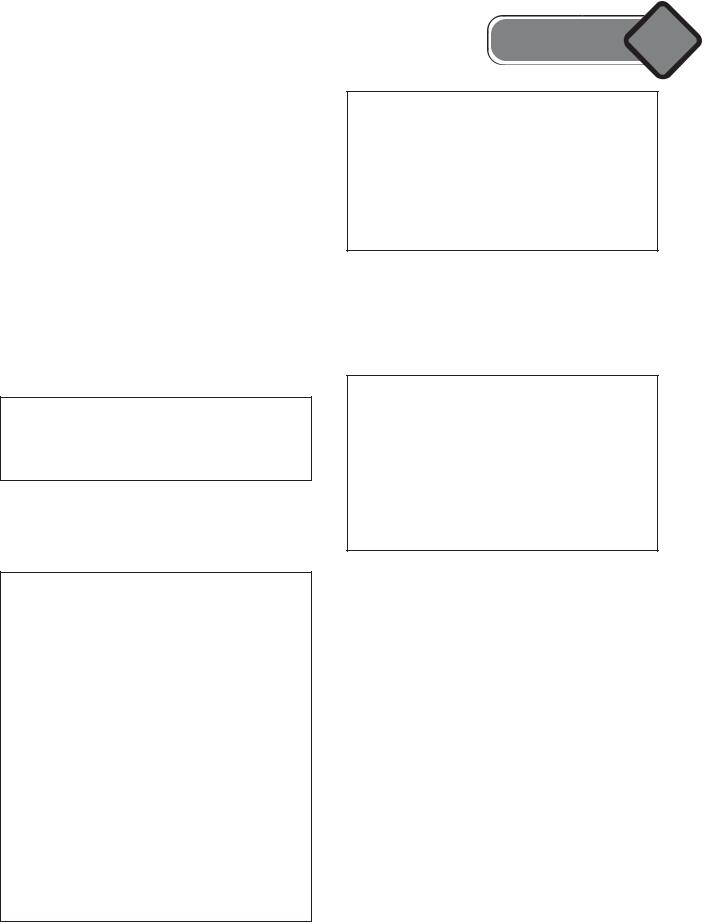
See it to believe it
Before you start …
ñWork through the questions with the class, asking follow up questions to encourage Ss to expand on their answers as much as possible. (e.g. What is your favourite room in your house? Why? What household chores do you like/dislike doing? What do you like/ dislike about your neighbourhood? What do you think makes a good neighbour?)
ñMake Sure Ss understand this section and use the prompts to recycle vocabulary seen in Module 2.
Look at Module 3
ñRefer Ss to the title of module, See it to believe it, and invite them to suggest what they think it means and what they expect to learn from the module.
Suggested Answer Key
I think the title refers to mysterious events or things that we can’t explain and often don’t believe in, unless we see it ourselves.
ñAsk Ss to look through the module and find the page numbers for each of the pictures. Ask questions to stimulate a discussion about them.
Suggested Answer Key
Focus Ss’ attention on pic 1 (p. 41).
T: What page is the picture on? S1: It’s on page 42.
T: What does the picture show?
S2: It shows a strange sea creature under the sea with a ship crossing above it.
T: Do you think such animals exist? Why (not)? S3: I think some do as so many people have seen
them. I think others are just stories made up by people.
T:Can you think of any strange creatures from your country? etc
Pic 2 (p. 44)
What is this a picture of? What is the unit about? Do you remember your dreams? What kinds of things do you dream about? Do you think they mean anything?
Module 3
Pic 3 (p. 53)
What does the picture show? Do you believe in haunted houses and buildings? Why (not)? Do you know of a haunted house or building?
Pic 4 (p. 55)
What do you see in the picture? Do you like looking at art? Do you think art is important? Why (not)?
Find the page number(s) for
Allow Ss time to browse through the module and find the items. Ask them to explain what each item is and elicit simple information about each of them.
Suggested Answer Key
a dream dictionary (p. 44)
What does this dictionary show? (the meaning of certain things that are seen in a dream), Have you seen any of the items in the dictionary? Why do we want to understand our dreams?
some shapes (p. 54)
What are the shapes you see? How do they relate to the unit?
Explain that the module has:
―a Culture Corner
―an Across the Curriculum section
Ask Ss to look at the relevant pages and elicit what each section is about (The most haunted castle in Britain!, Art & Design ― Painting styles).
Listen, read and talk about …/Learn how to …/ Practise …/Write/Give …
Select Ss to read through the list of items that will be covered in the module. If necessary, explain any new vocabulary. Ask Ss to go through the list and tick any items they think they know or can do, put a cross next to the ones they do not know and a star next to the ones they think will be the most useful. Select Ss to report on which items they have ticked or put a star next to.
49
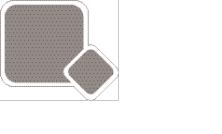
|
3 a |
|
|
|
Reading & Vocabulary |
|
|
|
|
|||||||||||||||
|
|
|
|
|
|
|
Objectives |
|
|
|
|
|
|
|
|
|
|
|
|
|
|
|||
|
|
|
|
|
|
|
|
|
|
|
|
|
2 |
|
Focus |
Reading for specific information |
||||||||
Vocabulary: |
related |
to |
mythical |
monsters/ |
||||||||||||||||||||
|
(multiple matching) |
|
|
|
|
|||||||||||||||||||
creatures; way to look |
|
|
|
|
|
|
|
|
|
|
||||||||||||||
|
|
|
|
|
|
ñ Remind Ss to read the questions and underline |
||||||||||||||||||
Reading: reading for confirmation; reading for |
|
|||||||||||||||||||||||
|
|
|
the key words and then read the text and look |
|||||||||||||||||||||
specific information |
|
|
|
|
|
|
|
|
||||||||||||||||
|
|
|
|
|
|
|
|
for similar words/phrases that match the key |
||||||||||||||||
Speaking: discussing mythical creatures/ monsters |
|
|
|
|||||||||||||||||||||
|
|
|
words. |
|
|
|
|
|
||||||||||||||||
Writing: a diary |
entry about a sighting of a |
|
|
|
|
|
|
|
|
|||||||||||||||
|
ñ Ss complete the task individually. |
|||||||||||||||||||||||
monster |
|
|
|
|
|
|
|
|
|
|
||||||||||||||
|
|
|
|
|
|
|
|
|
|
ñ Ask Ss to read out the text in class and check |
||||||||||||||
|
|
|
|
|
|
|
|
|
|
|
|
|
|
|||||||||||
|
|
|
|
|
|
|
|
|
|
|
|
|
|
|
|
their answers. |
|
|
|
|
||||
Reading |
|
|
|
|
|
|
|
|
|
|
|
|
|
|
|
|
||||||||
|
|
|
|
|
|
|
|
|
|
|
|
|
|
|
|
|
|
|
|
|||||
|
|
|
|
Introducing the topic |
|
|
|
|
|
|
|
|||||||||||||
1 a) |
|
Focus |
|
Answer Key |
|
|
|
|
|
|||||||||||||||
|
|
Refer Ss to the pictures and elicit from Ss what |
|
1 |
A |
3 |
A |
5 |
A |
7 B |
|
|||||||||||||
|
|
they know about the creatures. Write down any |
|
2 |
B |
4 |
C |
6 |
B |
|
|
|||||||||||||
|
|
new vocabulary on the board. |
|
|
|
|
|
|
|
|
|
|
|
|
|
|||||||||
|
|
|
|
|
|
|
|
|
Understanding new vocabulary |
|||||||||||||||
|
|
|
|
|
|
|
|
|
|
|
|
|
|
|
||||||||||
|
|
|
|
|
|
|
|
|
|
|
|
3 |
|
Focus |
||||||||||
|
Suggested Answer Key |
|
|
|
|
|||||||||||||||||||
|
|
|
|
|
|
ñ Refer Ss to the words/phrases in the rubric. |
||||||||||||||||||
|
I have heard of the Loch Ness Monster. It is a |
|
|
|||||||||||||||||||||
|
|
ñ Have |
Ss |
match |
the words/phrases with the |
|||||||||||||||||||
|
creature that |
lives |
in |
a lake in |
Scotland. It |
|
|
|||||||||||||||||
|
|
|
|
highlighted words from the text that mean the |
||||||||||||||||||||
|
doesn’t do anything bad and only a few people |
|
|
|
|
|||||||||||||||||||
|
|
|
|
same. Remind Ss to use the content of the text |
||||||||||||||||||||
|
have ever ‘seen’ it. |
|
|
|
|
|
|
|
|
|||||||||||||||
|
|
|
|
|
|
|
|
|
to understand the meaning of the highlighted |
|||||||||||||||
|
The Kraken is from Norway. It is a giant sea |
|
|
|
|
|||||||||||||||||||
|
|
|
|
words. Allow Ss time to write down any new |
||||||||||||||||||||
|
creature that attacks ships. |
|
|
|
|
|
||||||||||||||||||
|
|
|
|
|
|
vocabulary in their notebooks. |
||||||||||||||||||
|
Bigfoot is |
from the |
USA. It is a |
giant hairy |
|
|
|
|
||||||||||||||||
|
|
ñ Check Ss’ answers. |
|
|
|
|||||||||||||||||||
|
creature that walks like a human but looks like |
|
|
|
|
|
||||||||||||||||||
|
|
|
|
|
|
|
|
|
|
|
|
|||||||||||||
|
an ape. |
|
|
|
|
|
|
|
|
|
|
|
|
|
|
|
|
|
|
|
|
|||
|
|
|
|
|
|
|
|
|
|
|
Answer Key |
|
|
|
|
|
||||||||
|
|
|
|
|
|
|
|
|
|
|
|
|
|
|
|
|
|
|
|
|||||
|
|
|
|
|
|
|
|
|
|
|
|
|
|
|
|
|
|
|
|
|||||
|
|
|
|
|
Understanding new vocabulary/ |
|
report ― tell people about |
|
|
|||||||||||||||
b) |
|
Focus |
|
sightings ― things that have been seen |
|
|||||||||||||||||||
|
|
|
Reading for |
specific information |
|
survived ― stayed alive |
|
|
||||||||||||||||
|
|
ñ Read through the word list in the rubric and |
|
horrifying ― shocking, disgusting |
|
|||||||||||||||||||
|
|
|
across ― wide |
|
|
|
|
|||||||||||||||||
|
|
|
elicit the meanings. |
|
|
|
|
|
|
|
|
|||||||||||||
|
|
|
|
|
|
|
approached ― came closer |
|
|
|||||||||||||||
|
|
ñ Invite Ss to describe the pictures, using the |
|
|
|
|||||||||||||||||||
|
|
|
violent ― with great force |
|
|
|||||||||||||||||||
|
|
|
words |
from the list and elicit where the |
|
|
|
|||||||||||||||||
|
|
|
|
off ― close to |
|
|
|
|
||||||||||||||||
|
|
|
creatures are from. |
|
|
|
|
|
|
|
|
|||||||||||||
|
|
|
|
|
|
|
so far ― until now |
|
|
|
|
|||||||||||||
|
|
ñ Have Ss listen to and read the text to check |
|
|
|
|
|
|||||||||||||||||
|
|
|
|
|
|
|
|
|
|
|
|
|||||||||||||
|
|
|
their answers. |
|
|
|
|
|
|
|
|
|
|
|
|
|
|
|
|
|||||
|
|
|
|
|
|
|
|
|
|
|
|
Finding opposites/antonyms |
||||||||||||
|
|
|
|
|
|
|
|
|
|
|
|
|
|
|
||||||||||
|
|
|
|
|
|
|
|
|
|
|
|
4 |
|
Focus |
||||||||||
|
Answer Key |
|
|
|
|
|
|
|||||||||||||||||
|
|
|
|
|
|
|
|
ñ Have Ss find opposites for the underlined words |
||||||||||||||||
|
The Loch Ness |
Monster has got |
a snake-like |
|
|
|||||||||||||||||||
|
|
|
|
in the text. |
|
|
|
|
||||||||||||||||
|
head, a humped back and a long tail. |
|
|
|
|
|
|
|
|
|||||||||||||||
|
|
ñ Ss compare their answers with a partner. |
||||||||||||||||||||||
|
The Kraken has got |
huge eyes and giant |
|
|
||||||||||||||||||||
|
|
ñ Check Ss’ answers and allow Ss time to write |
||||||||||||||||||||||
|
tentacles with sharp hooks. |
|
|
|
||||||||||||||||||||
|
|
|
|
|
|
down any new vocabulary in their notebooks. |
||||||||||||||||||
|
Bigfoot is two-legged with long arms, a short |
|
|
|
|
|||||||||||||||||||
|
|
|
|
|
|
|
|
|
|
|
|
|||||||||||||
|
neck and a hairy body. |
|
|
|
|
|
|
|
|
|
|
|
|
|
|
|
||||||||
|
|
|
|
|
|
Answer Key |
|
|
|
|
|
|||||||||||||
|
|
|
|
|
|
|
|
|
|
|
|
|
|
|
|
|
|
|
|
|||||
|
The Loch Ness Monster is from Scotland. |
|
|
1 |
different ≠ similar |
|
|
|
||||||||||||||||
|
The Kraken is from Norway. |
|
|
|
|
2 |
destroy ≠ create |
|
|
|
|
|||||||||||||
|
Bigfoot is from the USA. |
|
|
|
|
3 |
real ≠ mythical |
|
|
|
|
|||||||||||||
|
|
|
|
|
|
|
|
|
|
|
|
|
|
|
|
|
|
|
|
|
|
|
|
|
50
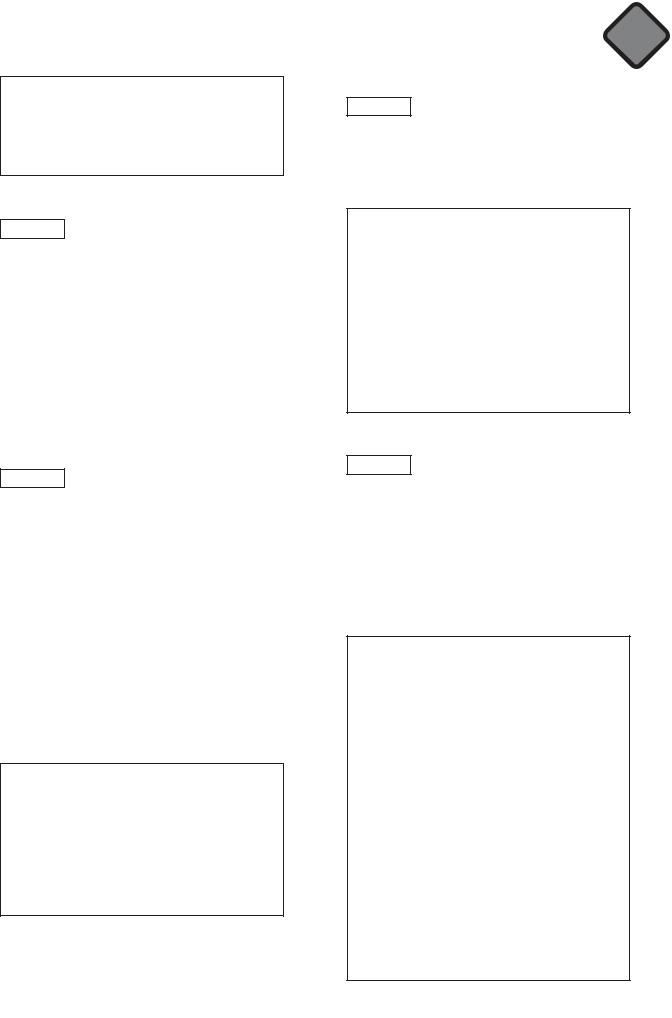
4 unknown ≠ famous
5 top ≠ bottom
6 blunt ≠ sharp
7 luckily ≠ unfortunately
8 miniature ≠ giant
Vocabulary
5Focus Understanding new vocabulary
ñHave Ss read through the word list and check they understand the words.
ñSs complete the task individually and check their answers in the text.
Answer Key |
|
|
|
1 |
mythical |
6 |
violent |
2 |
humped |
7 |
sharp |
3 |
snake |
8 |
human |
4 |
recorded |
9 |
extinct |
5 |
giant |
10 |
horrifying |
|
|
|
|
6Focus Expanding vocabulary (ways to look)
ñAct out the different ways of looking at something and ask the class to guess which verb from the list in the rubric is being shown.
ñSs complete the task individually.
ñCheck Ss’ answers.
ñHave Ss make three sentences of their own with three of the verbs from the list.
ñInvite Ss to read their sentences out in class.
Answer Key |
|
|
|
1 |
staring |
4 |
glare |
2 |
glanced |
5 |
spot |
3 |
caught a glimpse of |
|
|
|
|
|
|
Suggested Answer Key
1 It is not polite to stare at people.
2I did catch a glimpse of the bear as we drove through the forest.
3 I was able to spot him in the crowd.
4 I glanced at the clock to check the time.
5Don’t glare at me like that! You look very angry.
Reading & Vocabulary 3a
Speaking
7Focus Discussing the text
ñHave Ss read the text again.
ñIn pairs Ss discuss the text and what them most.
ñMonitor the activity and assist as necessary
Suggested Answer Key
A:I am impressed by how old the story of Loch Ness Monster is.
B:Me too. I never would have thought it from the 6th century!
A:Yes, and what about the Kraken. Can imagine seeing a squid big enough to wrap itself around an entire ship? impressive!
B:Yeah. What about Bigfoot? I was impressed that over 3,000 people have seen it! etc
Writing
8Focus Writing a diary entry about a
sighting of a monster
ñRead the rubric with Ss and check understand the task.
ñAllow Ss time to write their diary entries encourage them to use the vocabulary have learned in the unit.
ñInvite Ss to read their diary entries in class ask for feedback from the class.
Suggested Answer Key
Dear Diary,
I went to Loch Ness today for a picnic by lake. It was a beautiful day and the sun shining. I was sitting next to the lake enjoying my lunch when suddenly, I heard a
noise and saw the water on the lake begin move. The next thing I knew, a snake-like popped out of the water and slowly around. I was terrified. The creature began lifting its great long neck out of water. I couldn’t believe my eyes. I around to see if I had packed my camera in
bag to get a picture of it. I scrambled through my bag but when I turned to snap a photo, creature had disappeared. Not even a appeared on the water to show that it ever been there. As quickly as it all began, was over and the monster was gone.
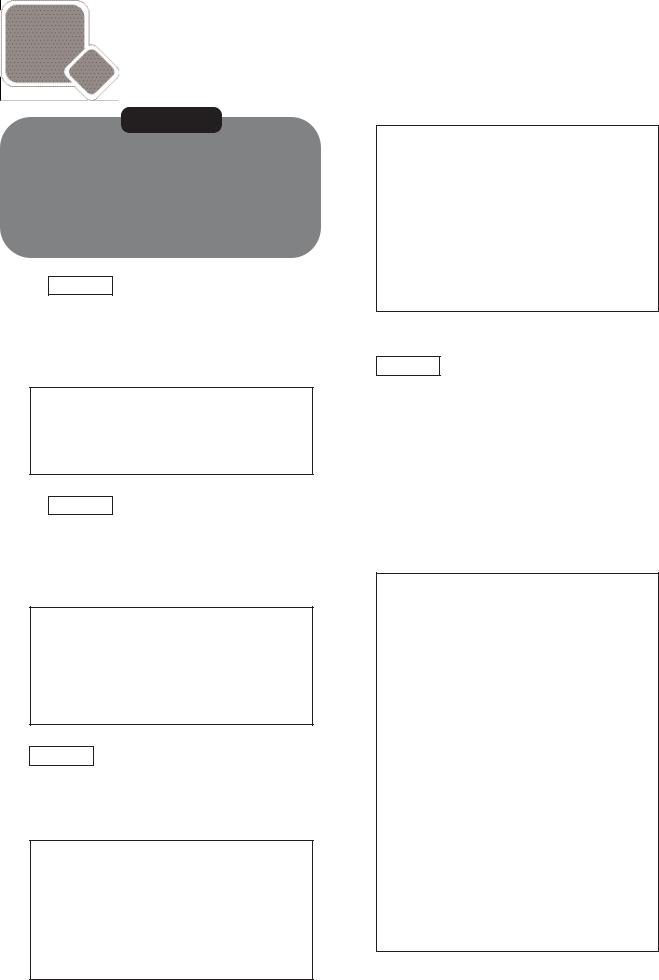
3 b Listening & Speaking
Objectives
Reading: reading for specific information Listening: listening for confirmation; listening for intonation; listening for comprehension/gist Speaking: discussing dreams; role playing; speculating/agreeing and disagreeing; practising intonation; expressing surprise and concern
1 a) Focus Introducing the topic of the unit/
Describing pictures
ñRefer Ss to the pictures.
ñElicit from Ss what they see in the pictures and discuss what the boy is dreaming about.
Answer Key
He’s dreaming about running to catch a bus, being able to fly and being chased by a monster.
b) Focus Identifying the meaning of dreams/
Reading for specific information
ñElicit from Ss what they think the dreams from Ex. 1a mean.
ñHave Ss read the dream dictionary to find out.
Answer Key
missing a bus = means he has missed an opportunity
flying = means he feels confident about sth being chased by a monster = means he is confused or has a lot on his mind
2Focus Discussing dreams
ñIn groups of 3-4, have Ss answer and discuss the questions in the rubric.
ñMonitor the activity and assist as necessary.
Suggested Answer Key
S1: I only remember a few of my dreams. I know if they were good or bad, but I don’t always remember the details. I rarely have nightmares.
S2: I dream about people I know and places I have been.
S3: I have the same dream over and over about taking a Maths test. I feel very nervous and anxious.
S4: I do think dreams have meanings. They express what we are feeling or experiencing at a certain time in our lives.
S3: I have seen a few books that talk about what dreams mean. The film “Field of Dreams” is about a man who dreams about people.
Everyday English
3Focus Speculating, agreeing and disagreeing
ñRead through the language box and the example exchange with Ss and check they understand the task and the expressions.
ñIn pairs have Ss role play exchanges using the ideas from the ‘dream dictionary’ in Ex.1b and any other ideas they may have.
ñDirect them to use the expressions from the language box.
ñMonitor Ss’ exchanges and check for correct use of phrases.
Suggested Answer Key
ñA: I had a dream that I was being chased. Do you have any idea what that means?
B:I think it means you feel confused.
A:You could be right.
ñA: I dreamt that I was falling. What could it mean?
B:I can’t say for sure, but it might mean you’re under stress.
A:That can’t be right!
ñA: I had a dream that I was flying. What do you think it means?
B:Well, it could be a sign that you are feeling confident!
A:You must be joking!
ñA: I had a dream that I was lost. Do you have any idea what that means?
B:I think it means you feel you have lost your way in life.
A: Do you really think so?
52
